There’s a lot to be said about comfort during winter months when nobody complains about warmth, but during the rest of the year, having a house that’s too hot can send family members who neither work nor attend school scurrying to air conditioned libraries and malls.
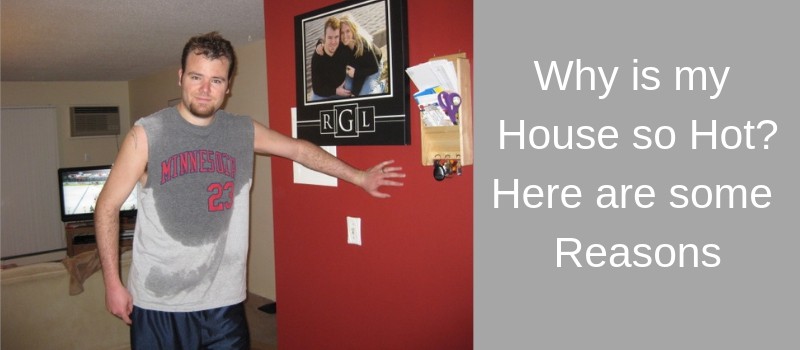
To get an answer to the question, “why is my house so hot?” consider one or more of the following 10 reasons and you should find the answer you seek.
1) You’re losing cool air.
This explanation places blame on a malfunctioning air conditioning system or units, though a switched-off thermostat could also be the culprit. You may need a new filter, patched ductwork or an infusion of Freon (if your system is old) to mediate your hot house.
2) Your windows are to blame.
HVAC systems can’t function efficiently if leaks, cracks, deteriorating window frames, glazing issues and/or ill-fitting windows are reasons your house is hot. A thorough inspection can point you in the direction of fixes that may not necessarily require you to replace one or more windows.
3) Your rooms face south.
When constant rays of sunshine flood interior rooms, even textiles and artwork can fade, so ordinary curtains may not help. You need thermal drapes. Fortunately, it’s easy to find these window treatments in many colors and prices.
4) Your house traps heat and won’t let go.
Heat continually rises until it reaches your roof tiles and ceiling space. Then, it has has nowhere to go but down, which is why your house is hot. On the other hand, heat rising from under your floor adds another element. In both cases, insulation can usually solve the problem. You can open an attic windows to release some hot air from inside if you want.
5) Your walls absorb heat from outside.
Bricks are popular for both practical and aesthetic reasons, but did you know that bricks store heat? If there’s no insulation behind those bricks, your home could get hot over the summer. You can’t do anything about the bricks, but you can add insulation to block heat they absorb.
6) You’re too cheap to run the air-conditioner.
Rising energy costs are nothing to sneeze at, but you can invest in fixes capable of reducing discomfort. Whole-house fan systems get two thumbs up from the U.S. Department of Energy
7) Your house consists of multiple levels.
The advent of the zoned air conditioning system has done more to help homeowners stay cool than all the cold beer on the planet. Add the usual suspects–heat rising, heat-absorbing walls, trapped ceiling heat–and a zoned HVAC system may be the only answer to your hot house.
8) You leave too many registers/vents open.
If rooms are not being used, close the vents and shut the rooms off from the rest of the house so your HVAC system can perform its job. By shutting down vents that disburse cooled air, you deliver more relief to hot rooms where vents are left open.
9) You rely only on your HVAC system.
It’s one of the least expensive fixes, yet lots of people don’t think about adding ceiling fans because they assume air conditioning is all they need to stay comfortable day and night. By working in concert with ceiling fans, your rooms stay cooler and you could get a summer power bill break, too.
10) You’re surrounded by heat generators.
Just about everything generating power in your home can increase room temperature. People, pets, internet routers and refrigerators all increase heat and if you’ve ever slept with a cat or dog, you know we’re not exaggerating. Next to turning everything off, there’s little you can do, though buying a pet bed for Rex or Fluffy could get you some relief.
Some Tips to Keep Your House Cool
1) Thermal Insulation to Protect from Heat entering from outside
Thermal insulation works both ways. It prevents heat loss or heat gain depending on the season. It acts as a barrier to extreme cold and keeps your home warm during winter. It likewise blocks scorching heat to keep your house cool in the summer.
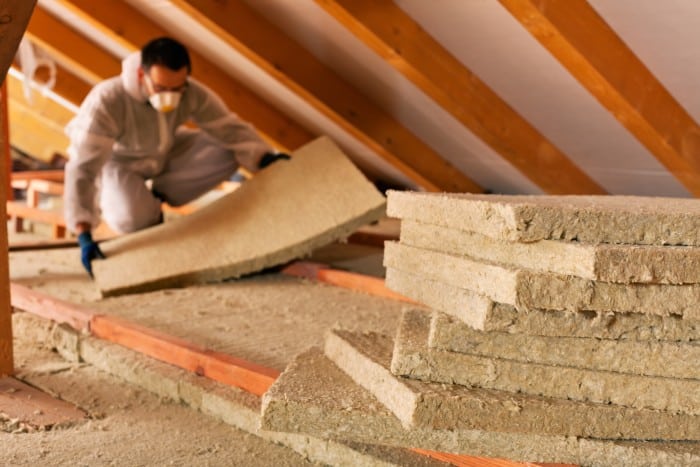
Thermal insulation is cost-effective and helps you maintain an energy-efficient home. You can use these layers of insulation materials in your roof, ceiling, wall, and floor. Insulate your roof and ceiling first. Because this is where heat transfer happens most.
Proper and good quality thermal insulation can largely improve home temperatures. Insulate beyond the primary interiors of your home when the budget allows.
Use thermal insulation on your veranda roof, garage, and detached workshop or shed. For options, you can retrofit walls using a brick veneer or weatherboard walls. You can also lay carpets where rooms are usually cooler.
2) Fix Air Leakage in the house
Fixing air leakage is another cost-effective and practical way to keep your house cool in the summer. You can prevent hot air from leaking in by caulking and weatherstripping. These effectively seal air and help you maintain the temperatures you want inside your home.
You can use caulk for cracks and openings that are stationary. This would be your stationary doors and window frames.
You can use weatherstripping on movable door and window components. Check for air leakage on spots where you have ducting, plumbing, and electrical wirings coming through. Apply caulk on those particular wall and ceiling sections to seal air.
Regularly check weatherstripping especially on your main doors and windows. Frequent access leads to wear and tear so inspect and maintain these components. Note that air sealing is a complementary solution. It does not replace the need for proper thermal insulation.
3) Remove Humidity
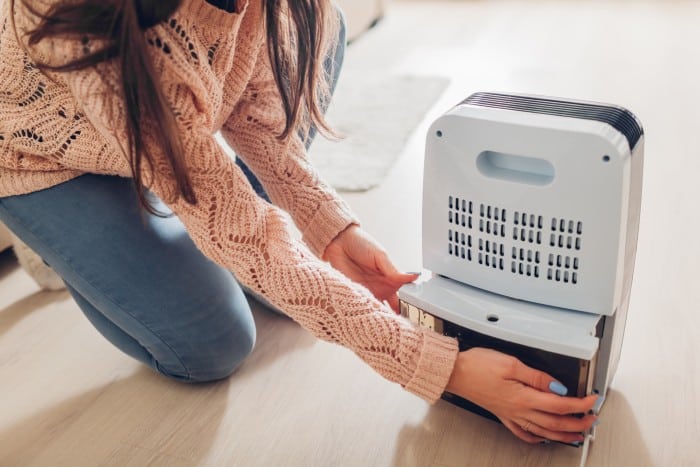
It is important to reduce humidity in the home. Humidity indicates the presence of water molecules in the air. And higher humidity levels mean lots of warm air is circulating in your home.
This also means there’s a lot of moisture around. That’s why you feel heavy and unable to relax. A buildup of moisture will spoil fresh air. Damp homes will develop molds and other bad odors.
What are the signs of high humidity? Wet stains and discoloration are bad, telltale signs. These may appear on your ceiling and walls. Peeling paint and creaky doors or floorboards also mean trouble.
Check for trapped moisture in the room. This shows up as visible condensation on your windows, mirrors, and pipes.
Too much humidity can cause headaches, shortness of breath, and allergies. So make efforts to reduce humidity levels whenever you can. Fix pipe leakages. Keep wet items outside especially your laundry. Air or sun dry them outdoors.
Install multiple ventilation and exhaust fans. Use them especially when cooking, cleaning, and while using the bathroom or toilet. Take cool or minimally heated showers whenever you can.
4) Add a White Roof to Your Home if possible
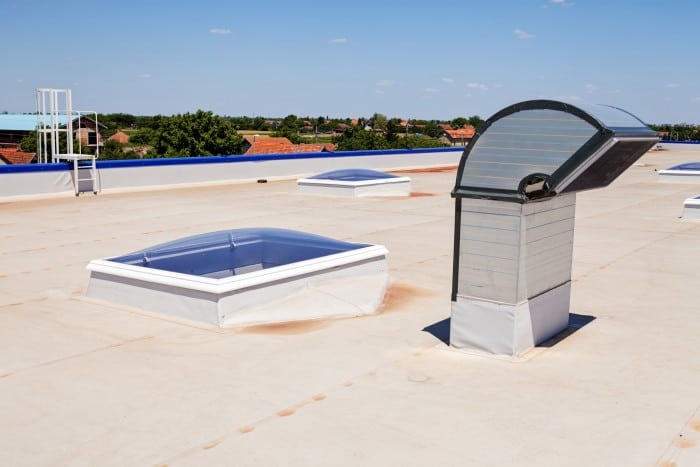
Keep your house cool in the summer by adding a white roof. A cool roof follows a design that reflects more sunlight.
Compared with a standard roof, it absorbs less heat. Cool roofs use highly reflective paints or particular sheet coverings. These also use highly reflective shingles or tiles.
We know that light-colored clothing makes for cooler wear than dark-colored wear. It is the same way with light cool roofs compared with dark roofs, so add a white roof to decrease the use of your air conditioner in summer.
A white roof will also improve comfort for spaces that do not have air conditioning. Your covered patios, garages, and workshop will benefit from having a white roof.
More than comfort, you also extend the life of your roof when you use a white one. Heat pressure is less. So, the roof service life is longer compared with dark roofing.
5) Treat your windows to block heat from coming in.
Window treatment is a simple and practical way to keep your house cool in the summer and lower your energy costs. You can dress up your windows not just for aesthetics but for function. Use the right materials. Place them properly. Then, experience a cooler home all through summer.
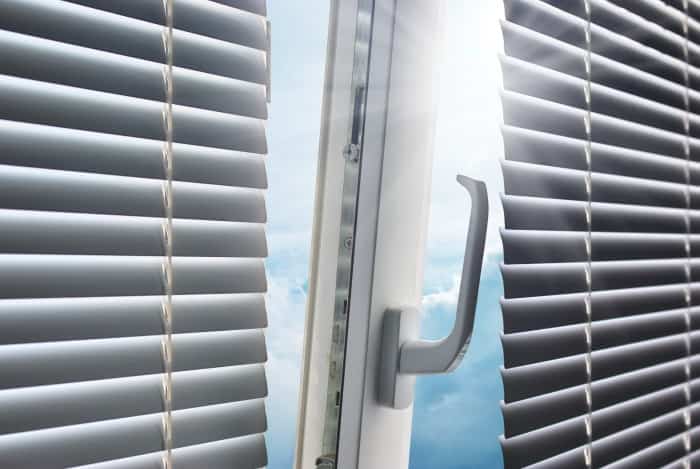
Use window shades. Mount them close to the glass and right up there against the wall. This helps provide a tight seal, keeping the heat out.
Choose dual colors. Use the light side to reflect the heat in summer. And use the dark side to absorb heat during winter.
Install blinds. These are flexible to use. Draw or close them fully when the heat is intense. Draw them partially if you want some sunlight in. You can also install exterior blinds for areas around your home that receive direct, intense heat from the sun.
Related Posts
- How to Stop Sliding Doors from Rattling – Causes and Solutions
- Cheap Ways to Heat a Room – Efficient and Budget-Friendly Solutions
- 11 Ways to Get Rid of Cooking Smells in a Small Apartment or House
- 11 Stores and Sites Like IKEA For Affordable Furniture and Home Products
- All About Polypropylene – Olefin Fabric Sofa Material
- 12 Different Types of Wood for Outdoor Furniture with Pros/Cons
Leave a Reply